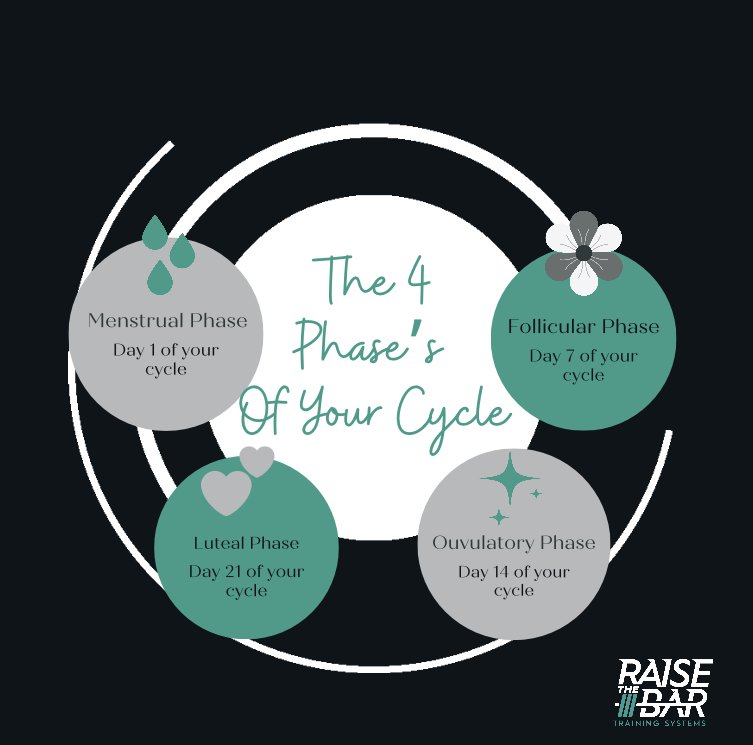The Intersection of the Female Menstrual Cycle and Strength Training: Optimizing Workouts for Every Phase
Strength training is a cornerstone of fitness, offering numerous benefits including improved muscle strength, endurance, and overall health. However, for women, understanding how their menstrual cycle influences their training can lead to more effective workouts and better results. In this article, we'll explore the fascinating interplay between the female menstrual cycle and strength training, providing insights and practical tips for optimizing workouts throughout the menstrual cycle.
Understanding the Menstrual Cycle: The menstrual cycle is a complex biological process that occurs in women of reproductive age, typically lasting around 28 days (though variations are common). It consists of four main phases: menstruation, the follicular phase, ovulation, and the luteal phase.
Menstruation (Days 1-5):
During menstruation, the uterine lining sheds, leading to bleeding.
Hormone levels, particularly estrogen and progesterone, are low at the beginning of this phase.
Women may experience fatigue and lower energy levels due to hormonal fluctuations and blood loss.
Follicular Phase (Days 1-14):
Estrogen levels gradually increase, promoting the thickening of the uterine lining.
Energy levels tend to rise, and women may feel more motivated and energetic during this phase.
Strength and endurance may be slightly improved compared to the menstrual phase.
Ovulation (Around Day 14):
Ovulation occurs when an egg is released from the ovary, typically around mid-cycle.
Estrogen levels peak just before ovulation, which may lead to enhanced performance and strength.
Women may experience an increase in body temperature and potentially higher energy levels.
Luteal Phase (Days 15-28):
Progesterone levels rise during this phase, preparing the uterine lining for potential pregnancy.
Energy levels may fluctuate, with some women experiencing fatigue and mood changes.
Strength and performance may be slightly reduced compared to earlier phases.
Optimizing Strength Training Throughout the Menstrual Cycle: Now that we have a basic understanding of the menstrual cycle, let's explore how women can tailor their strength training workouts to optimize performance and results throughout each phase:
Menstrual Phase:
Focus on lighter intensity workouts, such as yoga, Pilates, or gentle strength training.
Listen to your body and prioritize recovery to manage fatigue and discomfort.
Incorporate exercises that target the core and pelvic floor muscles to support menstrual health.
Follicular Phase:
Take advantage of increased energy levels to push for higher intensity and volume in your workouts.
Incorporate compound exercises like squats, deadlifts, and bench presses to maximize muscle recruitment and strength gains.
Experiment with progressive overload by gradually increasing weights or reps throughout the phase.
Ovulation:
Capitalize on the peak in estrogen levels to push your limits and challenge yourself in your workouts.
Consider incorporating explosive movements like plyometrics or powerlifting variations to take advantage of heightened strength and power.
Focus on proper nutrition and hydration to support performance and recovery during this phase.
Luteal Phase:
Modify your workouts to accommodate potential changes in energy levels and mood.
Incorporate more restorative activities like gentle stretching, foam rolling, or low-intensity cardio.
Pay attention to recovery strategies such as adequate sleep, hydration, and nutrition to support hormonal balance and recovery.
Conclusion: Understanding how the menstrual cycle influences strength training can empower women to optimize their workouts and achieve better results. By tailoring training strategies to accommodate the physiological changes that occur throughout the menstrual cycle, women can work with their bodies rather than against them, ultimately enhancing performance, recovery, and overall well-being. Whether it's adjusting intensity, volume, or exercise selection, embracing the cyclical nature of the menstrual cycle can lead to more effective and sustainable strength training practices.

